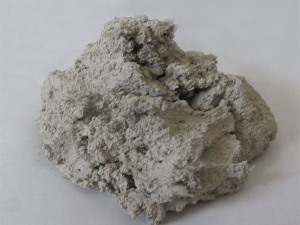The solution for cracks in intermediate frequency furnace charge
The intermediate frequency furnace is the main equipment of the foundry and heat treatment workshop. The stability, reliability and safety of its operation are the guarantee for the normal and stable operation of the casting and heat treatment production line in the flow operation. The intermediate frequency furnace has a good development in the field of thermal processing. Prospects such as the main production of casting pre-forging heating furnace, diathermy furnace and induction heating for: diathermy, rolling, casting, pipe bending, heat treatment (quenching), welding and other processes.
Now the intermediate frequency furnace smelts high manganese steel. Normally, magnesia is used as the charge, but cracks always appear. How to prevent cracks? The following editor will introduce the method that the intermediate frequency furnace charge is suitable for high manganese steel and does not crack.
The thermal shock stability and linear expansion coefficient of magnesia magnesia powder are inherently high. Therefore, cracks cannot be prevented. So what kind of lining material can be used to prevent it? Use neutral aluminum-magnesium spinel as the charge. It has both magnesium The refractoriness of sand also has neutral raw materials and does not react with manganese steel. Therefore, it will not show cracks. The current furnace age is higher than that of magnesia. Therefore, it is now popular in the market.
When using aluminum-magnesium spinel to make the charge, it is necessary to beat slowly and bake quickly, and to melt quickly. Every day, the temperature of the initial furnace should be raised slowly, so that during smelting, the expansion of the furnace lining will squeeze the cracks and prevent them from passing through the furnace. If the temperature rises quickly , the molten steel may become liquid and drill into cracks to form through the furnace before extrusion.
1. Improve the method of blasting the furnace and use the core-pulling tire tool to prevent transverse cracks formed when the tire tool is pulled out;
2. Improve the oven process and slowly heat up;
3. After opening a furnace, adopt a perfect method of heat preservation and slow cooling;
4. Add a good sliding mica pad between the induction coil and the furnace lining to reduce the resistance of the induction coil when the furnace lining expands and contracts;
5. Adjust the particle size gradation ratio (increase the ratio of coarse particles).

Related Industry Knowledge
- Features and Benefits of Coil Clay
- What are the advantages of a good furnace lining
- Misunderstandings in the use of ramming materials in intermediate frequency furnaces
- Phenomenon analysis of failure of argon blowing of ladle permeable bricks and how to improve the rate of argon blowing
- Where is the consumption reduction and energy saving of breathable bricks reflected?
- How to improve the service life of intermediate frequency furnace lining
- Reasons for damage to intermediate frequency furnace lining and how to solve them
- The performance and advantages of breathable brick
- Analysis of Structural Characteristics of Dispersive Breathable Bricks
- The intermediate frequency furnace charge knotting process needs to pay attention to details sharing
- Criteria for design of intermediate frequency furnace lining material components
- Factors affecting the ventilation function of ventilation bricks
- Precautions for impermeable breathable bricks
- The role of coil glue
- Talking about the construction technology of dry ramming material
- The composition and function of ramming material
- Introduction of Insulation of Coil Clay
- Safety elements of ladle breathable bricks


